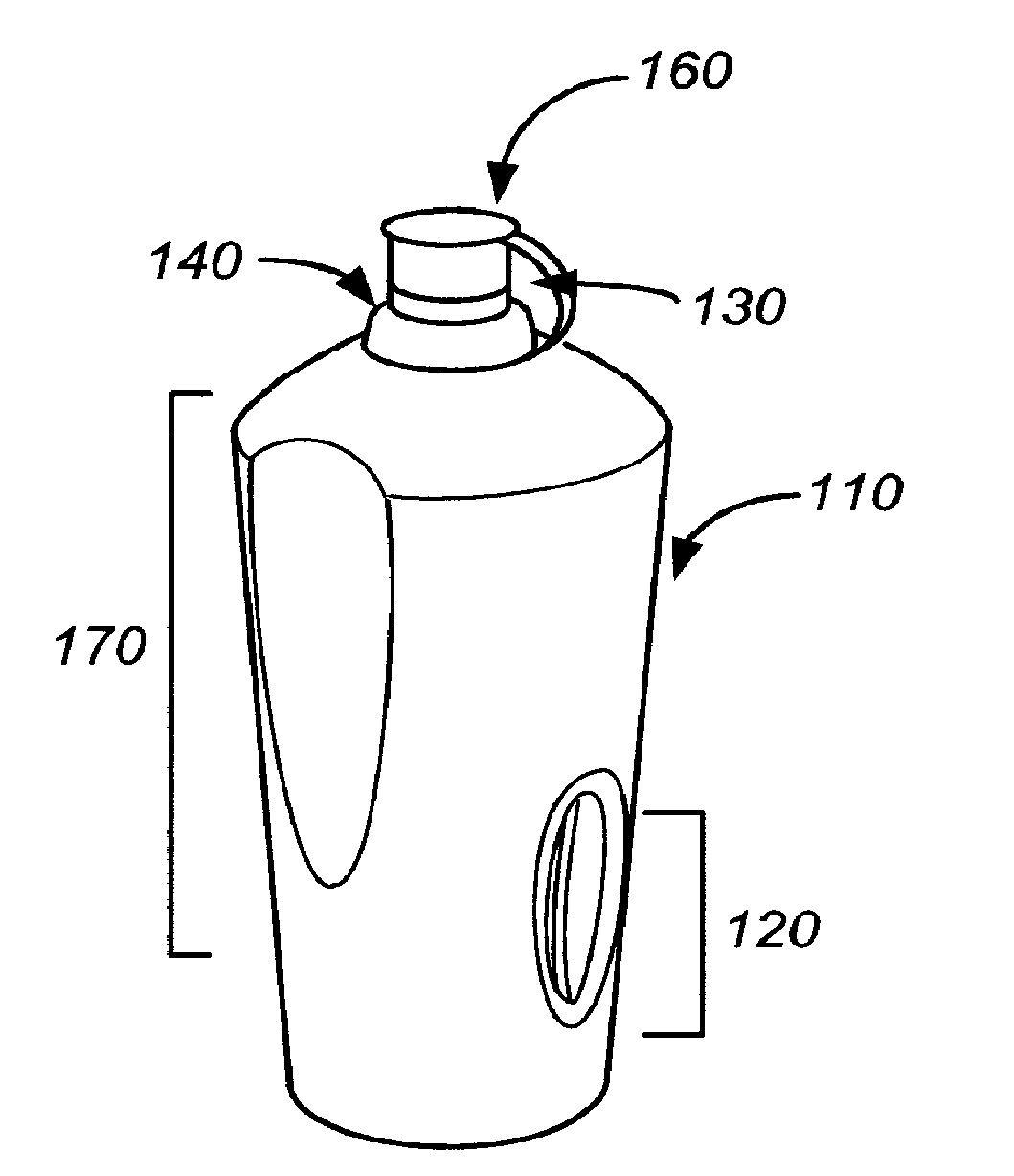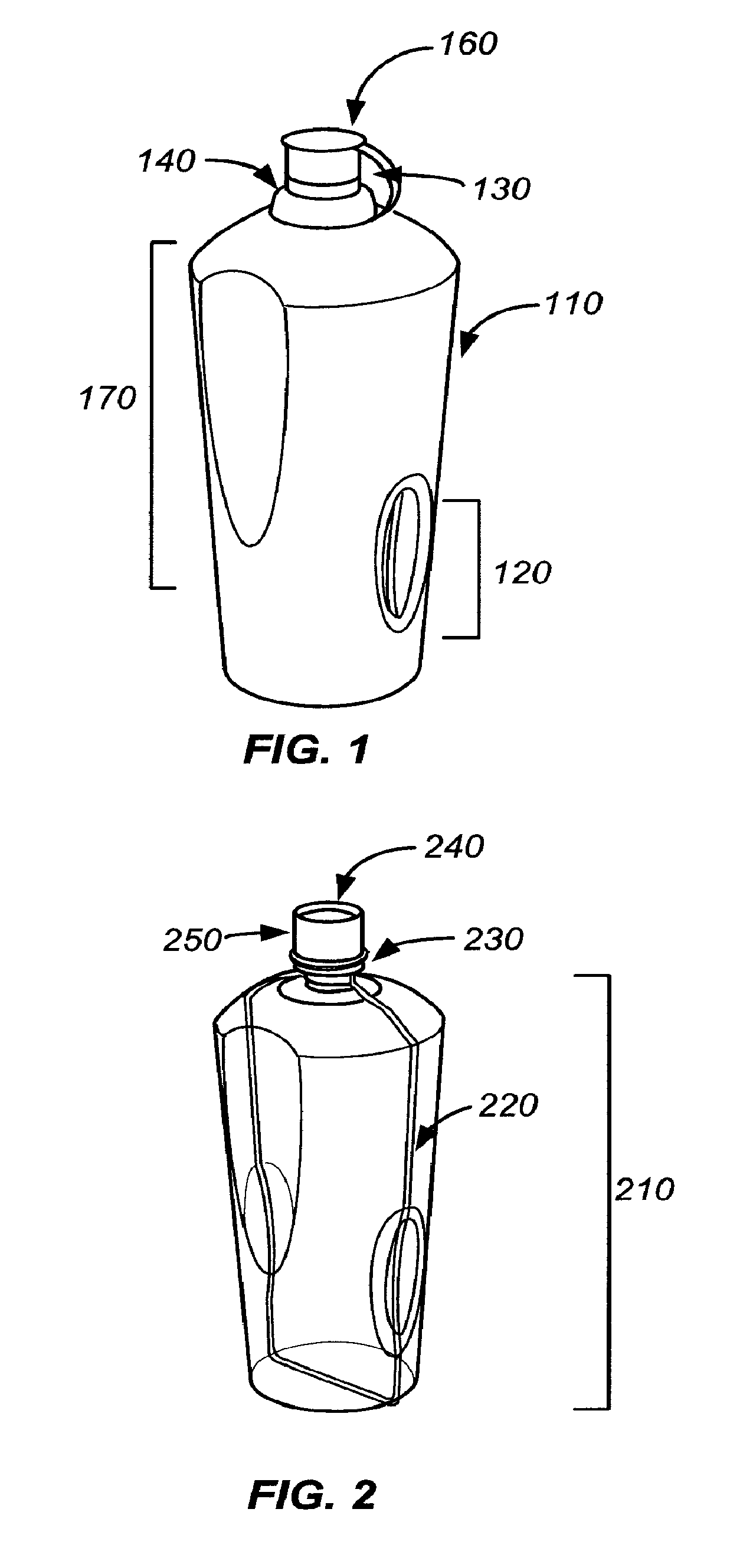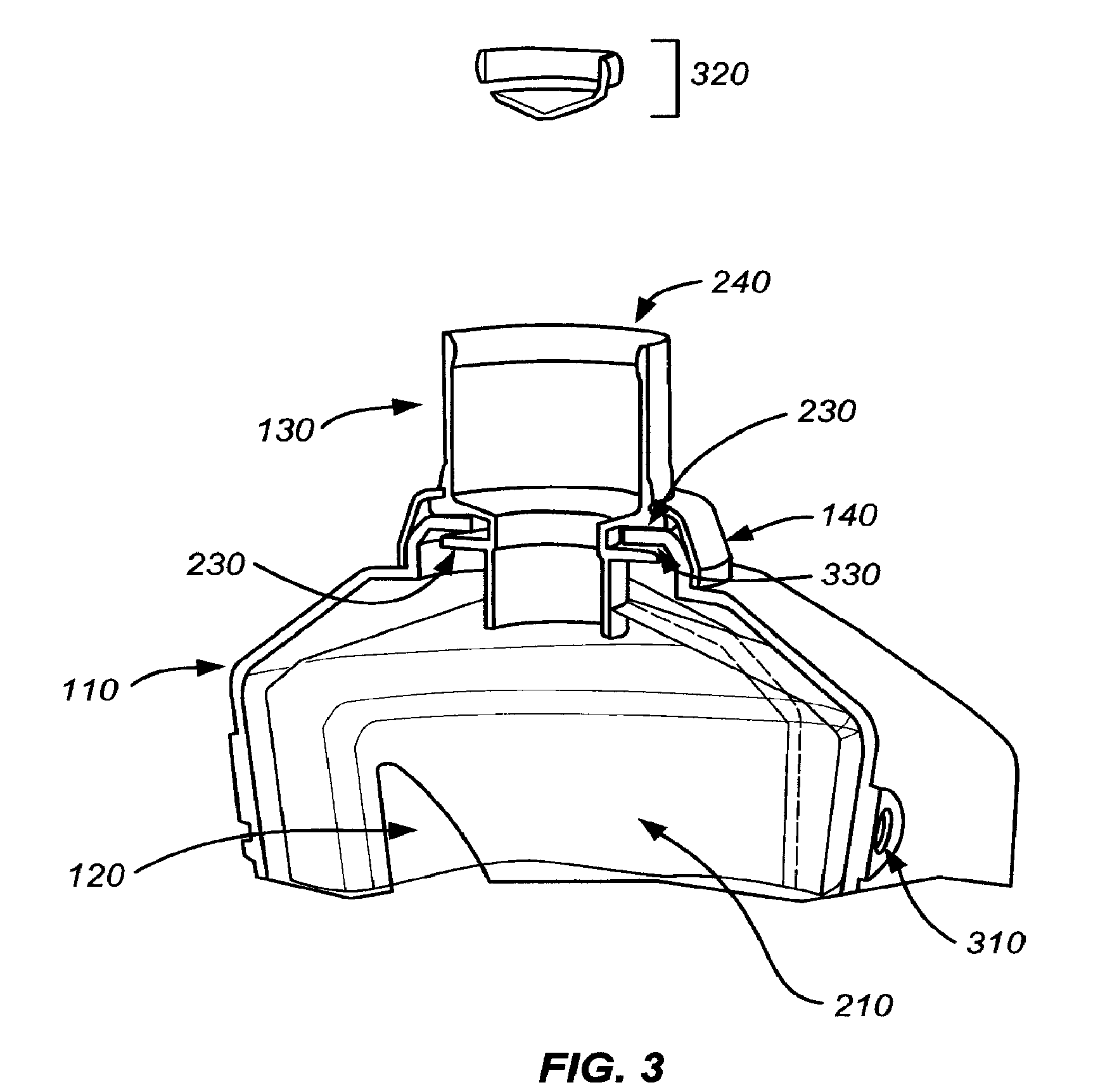Containers for holding materials
a technology for containers and materials, applied in the direction of transportation and packaging, pliable tubular containers, liquid transferring devices, etc., can solve the problems of high energy required to make bottles, large waste of packaging, and high weight of packaging resulting from bottles, so as to facilitate friction fitting to a fitting
- Summary
- Abstract
- Description
- Claims
- Application Information
AI Technical Summary
Benefits of technology
Problems solved by technology
Method used
Image
Examples
Embodiment Construction
[0036]While preferable embodiments of the invention have been shown and described herein, it will be obvious to those skilled in the art that such embodiments are provided by way of example only. Numerous variations, changes, and substitutions will now occur to those skilled in the art without departing from the invention. It should be understood that various alternatives to the embodiments of the invention described herein may be employed in practicing the invention.
[0037]The invention provides for containers comprising components selected from the group consisting of a liquid-holding vessel, a closure, and a skeleton. The container components, including the liquid-holding vessels, fitments, closures and skeletons described herein can be interchanged or combined with various illustrations of the invention. Any of the aspects of the invention described herein can be combined with other container components known to those skilled in the arts.
[0038]The containers described herein can ...
PUM
| Property | Measurement | Unit |
|---|---|---|
| angles | aaaaa | aaaaa |
| angle | aaaaa | aaaaa |
| angle | aaaaa | aaaaa |
Abstract
Description
Claims
Application Information
 Login to View More
Login to View More - R&D
- Intellectual Property
- Life Sciences
- Materials
- Tech Scout
- Unparalleled Data Quality
- Higher Quality Content
- 60% Fewer Hallucinations
Browse by: Latest US Patents, China's latest patents, Technical Efficacy Thesaurus, Application Domain, Technology Topic, Popular Technical Reports.
© 2025 PatSnap. All rights reserved.Legal|Privacy policy|Modern Slavery Act Transparency Statement|Sitemap|About US| Contact US: help@patsnap.com



